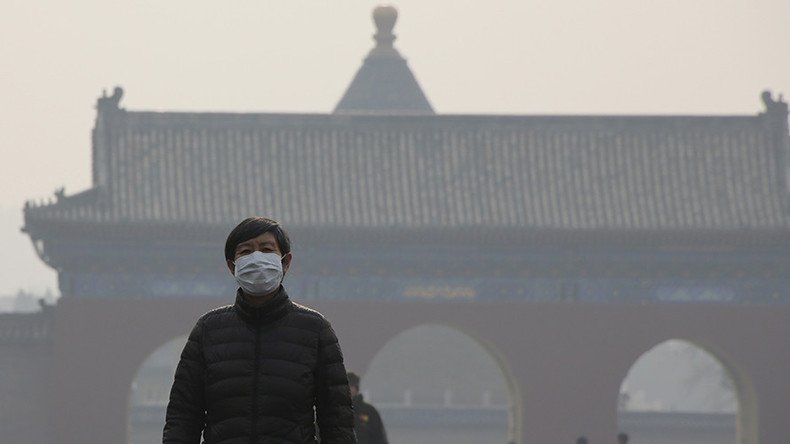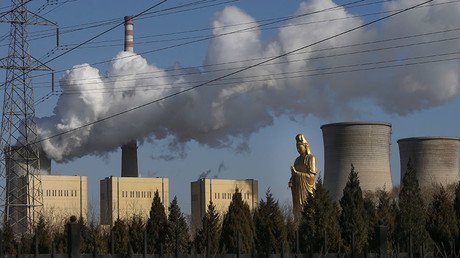Beijing raises ‘red alert’ pollution threshold in new attempt to combat smog

On the heels of another contingency measure, China has announced a ‘red alert’ threshold for air pollution will be raised in Beijing. The capital had its first red alert in December, when thick smog prompted school and business closures.
Imposing millions of dollars in fines and other measures don't seem to be having the desired effect on Beijing's pollution problem.
The current air quality index (AQI) rules stipulate that a red alert must be issued when the AQI exceeds 200 for at least three days – that’s for the capital. In neighboring Tianjin and Hebei, it’s only triggered when the level exceeds 500 per day.
Starting this March, the country will employ a uniform average measurement for both the capital and its surrounding areas. A red alert will also be imposed if the average air quality is at 200 for four days straight, 300 for at least two days, or 500 for a single day.
Of the five major pollutants, including carbon monoxide and others, authorities calculate the individual score for pollution for each pollutant present in the atmosphere. The highest score is the current AQI. But the scores are non-linear, as is the final AQI. Some pollutants are measured on a different curve.
According to the environmental protection bureau, raising the threshold around the capital should also affect pollution levels in outlying regions. Response measures to alerts have not been altered, but each city will be able to decide on school closures at its own discretion.
The report comes just as another measure was announced – to build wind corridors across the capital, designed to redirect the flow of smog away from the city. The special ventilation corridors will measure 80 to 500 meters and connect parks and rivers, as well as highways and tall buildings.
China has recently admitted that, despite all efforts to keep the smog at bay, it’s unlikely to meet the pollution goals it agreed to reach by 2030. The country is one of the biggest pollutants in the world and parts of its capital and other, industrial areas in the vicinity, are considered hazardous to be in for extended periods of time.
The government announced in January it would close some 2,500 companies with a high record of polluting sometime this year.













